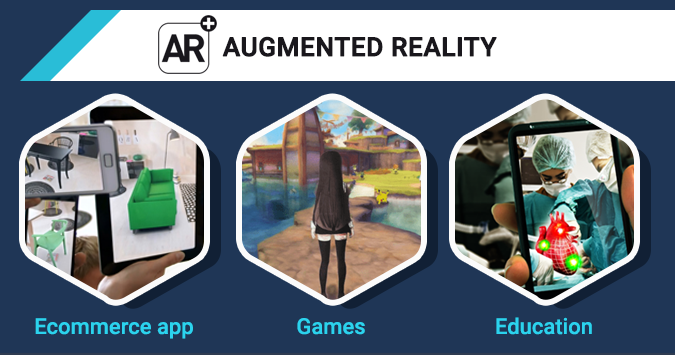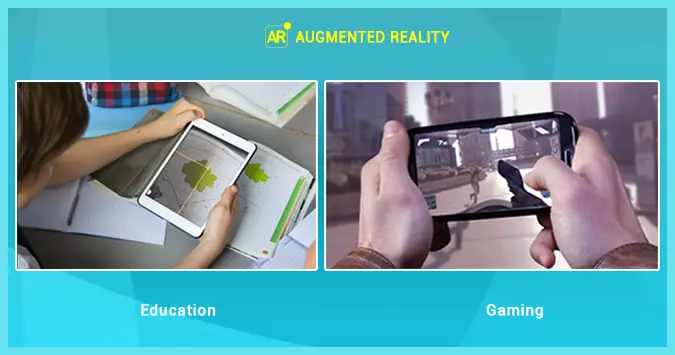Augmented Reality-way to enter an Virtual World

Augmented reality is a technology that integrates digital information and the user’s environment. In contrast to the virtual reality that is based on the artificial environment, the augmentation is typically based on semantic context and works in real time with environmental elements. Further, it helps to turn an individual´s perceived world into real world, with the elements of the digital technology.
Augmented Reality 3D viewers such as Augment help the users to set full-size 3D models in the real environment, either with or without using trackers, which are uncomplicated images attached to 3D models to obtain Augmented Reality.
Similarly, the Augmented Reality browsers enhance the display of camera through contextual information. Finally, the Augmented Reality is more commonly experienced via gaming with the real time environment.
TECHNOLOGY:
Computer, Head-mounted, Contact lenses, Eye Tap, Handheld, Hardware, HUD, Spatial Tracking, Virtual retinal display, Input devices, Eyeglasses, Display.
DEVICES OF AUGMENTED REALITY:
Augmented Reality is availed on any types of screens & connected devices:
In mobile devices such as smartphones, tablets, etc, Augmented Reality works like a magic window; the viewer on the devices helps to view holograms and to operate on the 3D models. Today, you can find a plethora of Augmented Reality apps available for Android, iPhone and iPad.
On the connected television players and on PC, a webcam helps to access Augmented Reality; while it is relayed through the screen. It can be problematic, if you manipulate a tracker, before your screen.
Further, on the head mounted displays, lenses, and glasses, the Augmented Reality turns to be a component for the entire view, allowing enhanced life-like Augmented Reality experiences.
SOFTWARE AND ALGORITHMS:
The software should obtain real world components from the camera images. This process is known as image registration. This process indulges multiple computer vision methods, which are connected to the video tracking. Various augmented reality computer vision technologies are obtained from visual odometry. Generally, they have 2 different parts.
The first one detects the interest points / optical flow/ fiducial markers in the camera images. Initially, feature detection methods like corner detection, blob detection, thres holding, edge detection and/or other image processing techniques are used.
Secondly, it reinstates to a real world coordinate system, by using data acquired during the initial stage. Mathematical tools like rotation representation with exponential map, geometric algebra, projective (epipolar) geometry, kalman and particle filters, nonlinear optimization and robust statistics are applied in this stage.
Augmented Reality Markup Language (ARML) is developed in the Open Geospatial Consortium (OGC),that includes an XML grammar, which explains the appearance and position of virtual objects within the scene and ECMAScript bindings to permit active access to virtual objects properties.
AUGMENTED REALITY APPLICATIONS:
Augmented reality contains a wide variety of applications in numerous sectors including Xbox and PlayStation video games, augmented reality games in Mobile Phones, All Education systems in 3D view, Mobile phones AR apps, Military, product promotions in digital business and marketing arena.





